Cayenne: [Cultivation, Irrigation, Associations, Pests and Diseases]
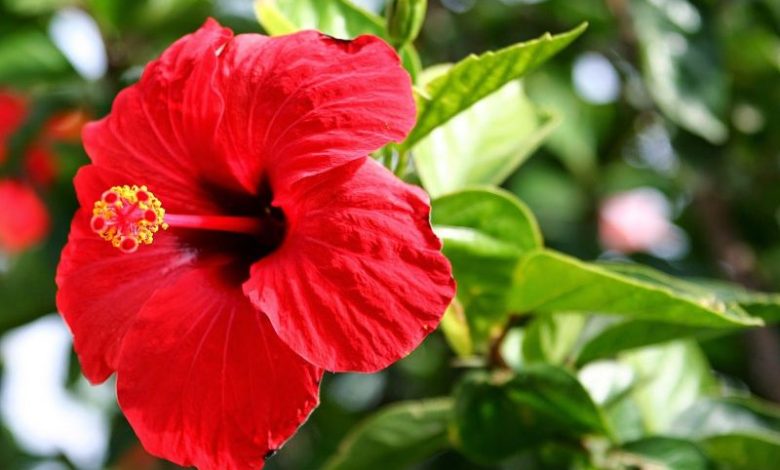
Important points when sowing Cayenne
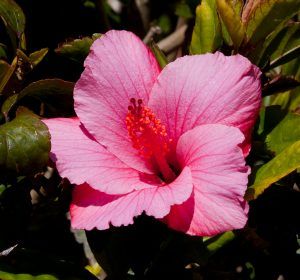 Where to sow? In full light. It needs a lot of light.
Where to sow? In full light. It needs a lot of light.- When? In the spring.
- How do we prepare the land? Removed, removing weeds. With compost substrate and manure.
- How do we water? With drip.
- How often do we water? In summer, 2 times a week. The rest of the year spaced irrigation. Abundant during the flowering period.
- Plagues and diseases? Aphids, whiteflies, Caterpillars, Mealybugs and Mites. Botrytis.
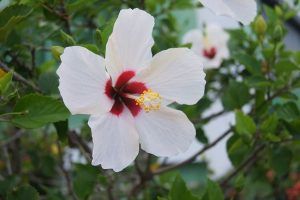 There are more than 150 species of cayenne distributed in the intertropical and subtropical regions. Cayenne is from the Malvaceae family, which also includes the cotton plant.
There are more than 150 species of cayenne distributed in the intertropical and subtropical regions. Cayenne is from the Malvaceae family, which also includes the cotton plant.
According to botanical studies, the most appreciated cayennes come from Sudan, and although their natural origin is not entirely clear, they probably come from China, or East Africa.
Its cultivation has been exported to other subtropical areas of the globe, such as Jamaica, Mexico, Central America, and India. Today, however, the largest producers of cayenne are Thailand and China.
In Mexico, the cayenne flower is considered a delicacy to prepare flan infusions, salads or soups. It is also used for the preparation of tacos and for the preparation of enchiladas. It is known by the names of cayenne, poppy or China Rose.
When to sow cayenne?
The cayenne flower reproduces by terminal cuttings not fully developed, during the spring.
Where to do it?
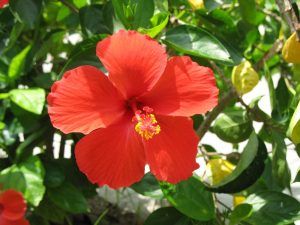 Cayennes are very versatile plants and thrive almost anywhere and in any condition whether it be in humid and shady areas.
Cayennes are very versatile plants and thrive almost anywhere and in any condition whether it be in humid and shady areas.
Cayennes thrive in full sunlight; however, afternoon shade is beneficial in hot weather. A warm, bright location is recommended and, in summer, it can be dried outside.
It has a slight winter rest, while during the rest of the year it maintains constant growth and spectacular flowering, especially during the warmer months of the year.
How to prepare the land?
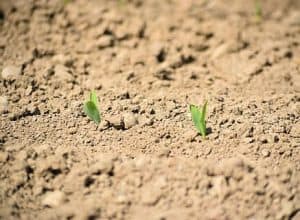 Cayenne prefers cool and fertile soils. If it is very sandy or clayey, it requires improving its quality by incorporating a planting substrate into the garden soil in a proportion of 20 to 50%.
Cayenne prefers cool and fertile soils. If it is very sandy or clayey, it requires improving its quality by incorporating a planting substrate into the garden soil in a proportion of 20 to 50%.
The recommended fertilizer can be of the liquid universal type provided in the irrigation water. The subscriber frequency can be once a week during the warm months of the year.
At the lowest doses recommended by the manufacturer. And one every 15 or 20 days in winter, at the highest doses. If the fertilizer for the substrate of the cayenne plant is in granular form, it is done using the broadcast technique, it being advisable to water the plant after each application.
It is recommended to try not to use cheap substrates that contain a large amount of salt and have an inconvenient behavior when it comes to draining the water from the cayenne.
The substrate for the cayenne must contain a good type of drainage since the flooding of the earth would produce, in a matter of days, an uncontrollable rot on the plant.
How do we water the cayenne?
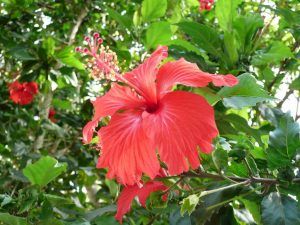 In full flowering period, the cayenne can be watered abundantly; in winter it requires less water.
In full flowering period, the cayenne can be watered abundantly; in winter it requires less water.
If the cayenne plant is located in a heated room, it should be sprayed often. It is important not to turn or move it so that the plant develops smoothly.
To check the humidity of the soil or substrate of the cayenne, you can put your fingers or any pointed wooden stick in the pot to check if it is moist or if, on the contrary, it is very dry.
To know how to water the cayenne, it is recommended to maintain uniform humidity, always water at dusk or first thing in the morning and place the appropriate amount of water.
How do we sow a cayenne step by step?
Planting in orchards or gardens
For the cultivation of the cayenne in orchards or gardens, the following recommendations can be followed:
- Sow the seeds and water immediately after planting.
- Keep the soil evenly moist until new growth appears.
- Give one deep watering a week to support healthy cayenne root development, and allow the soil to dry out between waterings, as soggy soil can cause problems like stem rot.
- Fertilize with a balanced general purpose fertilizer in the soil in spring and repeat in mid-summer. The ratio can be 14-14-14 or 10-10-10, according to the specifications of the different types of fertilizers.
- Provide support such as a tree branch or bamboo stake for tall perennial cayenne varieties.
- Prune the cayenne after the first flowering shoot, reducing the height of the plant by a quarter to a half of the height. Pruning results in a healthy plant and new flower bud.
- Cut plants back to 4 inches in late fall.
- Apply 3 to 4 inches of mulch to moderate soil moisture.
- Protect the Cayenne from low temperatures during the winter months.
Planting by cuttings
The sowing of the cayenne by cutting is done in a very simple way:
- Cut apical or internodal cuttings.
- Plant in small pots with a substrate for indoor plants.
- Cover with plastic to avoid dehydration of the cutting.
- Maintain a temperature around 27º C.
- Moisten the soil well and after a few weeks the roots of the new plant will come out.
What favorable associations does it have?
The association of crops of compatible plants produces benefits with respect to their cultivation separately, in addition to the use of light, water and/or nutrients.
There are no known favorable associations of the cayenne with other species, however, since it is a flowering plant, gardeners and specialists in the area often use the plant in compositions with others of the same species.
What pests and diseases attack the cayenne?
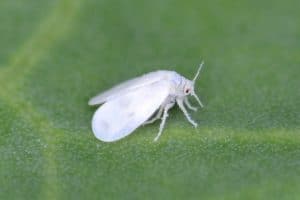 Cayenne can be attacked by pests such as aphids, whiteflies, caterpillars, mealybugs and mites.
Cayenne can be attacked by pests such as aphids, whiteflies, caterpillars, mealybugs and mites.
Pests, in general, can be combated with systemic-type insecticides. As for mites, they are controlled with acaricides, trying to thoroughly wet the underside of the cayenne leaves.
In all cases, it is advisable to carry out the treatments in the early or late hours of the day and never during the hours of greatest sunshine.
In the case of diseases, Botrytis (gray mold) is the most frequent in the cayenne, especially during the winter months. It is combated by removing the flowers when they wither, as well as with the application of a specific fungicide.
Bibliography and references
- Encyclopedia My first knowledge about Plants, Snakes and Conservation. (1961). Spanish edition by Dr. Frank Thompson. Grolier Publisher Incorporated New York. Printed in Mexico.
- Naumann & Göbel Verlagsgesellschaft mbH. (2019). Indoor and Balcony Plants-Ideas for all kinds of environments. SL Edition, Barcelona-Spain. P.P. 38 and 110.
digital database
- Flowers and plants. (2014, July 25). Hibiscus rosa-sinensis. Reproduced from: https://www.floresyplantas.net/hibiscus-rosa-sinensis/
- Let’s talk about flowers.com. Characteristics of the cayenne, poppy or China rose flower. Reproduced from: https://hablemosdeflores.com/caracteristicas-de-la-flor-cayena/
- Cebrián, Jorge. (2015). Hibiscus. Reproduced from: https://www.webconsultas.com/belleza-y-bienestar/plantas-medicinales/que-es-el-hibisco-y-donde-se-encuentra
- Alija, Josean. (2018, May 24). The Hibiscus. reproduced from: http://www.josenalija.com/hibisco/
- farm coast. Hibiscuses are a symbol of well-being and abundance. Reproduced from: http://www.costafarms.com/get-growing/noticia/los-hibiscos-son-simbolo-de-bienestar-y-abundancia
- From agronomia.com. How to grow cayenne, step by step. Reproduced from: https://deagronomia.com/cultivos/como-cultivar-cayenas/

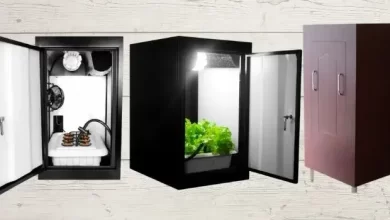
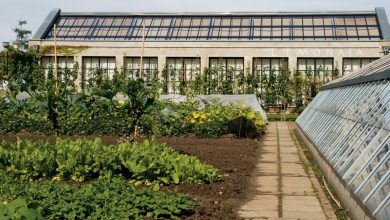
![Photo of Plant Strawberries: [Cultivation, Care, Irrigation, Substrate and Pests]](https://www.complete-gardening.com/wp-content/uploads/2022/08/plant-strawberries-cultivation-care-irrigation-substrate-and-pests-390x220.jpg)
